 |
Snapshots
of Life in the
US Air Force |
 |
| I was on active duty in the Air Force for 22 years as a "civil engineer," meaning I worked in the
organizations that maintain the facilities, utilities, pavements, and
grounds
on Air Force bases. Since every place in the world that the
Air Force
can operate from has at least some facilities, civil engineers can be
assigned
pretty much anywhere. I made some of those rounds and
collected
some photographs along the way. These are some of my
favorites--click
on them to go to larger images. |
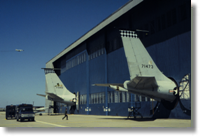 |
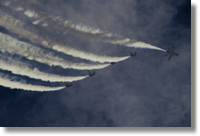 |
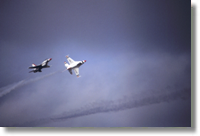 |
|
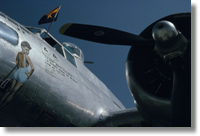 |
As
much
as I sometimes griped about various bureaucratic office jobs,
I had some great experiences and met some great people in the
Air
Force.
In the mid-1980s, McConnell AFB, Kansas, hosted active-duty
KC-135s, Air National Guard F-4s, and an annual air show and open
house. Watching the Thunderbirds perform is always fun; the best part is when most of
the
jets do a slow pass to one side, drawing your attention, and then a
solo
jet streaks over low and fast from the opposite direction and scares
the
living daylights out of you. At another air show, years later in Tucson, Arizona, this lovingly restored B-17 greeted the crowd. |
|
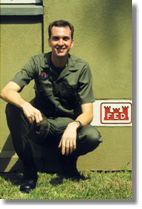
|
Me, as a lieutenant at Osan Air Base, Korea, in 1986. The red castle
marked
"FED" is the symbol of the Army Corps of Engineers, Far East District,
which supervised US military construction projects in Korea.
I loved
those plain olive-drab fatigues...long since replaced by camouflaged
"BDUs",
they were honest, comfortable, hard-working uniforms.
19
years later, I posed next to the "Gulf Region North" castle
while deployed with the Corps of Engineers at Balad Air Base, Iraq.
|
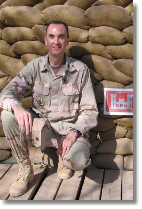 |
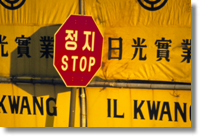 |
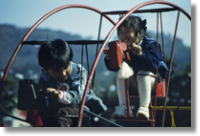 |
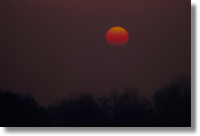 |
|
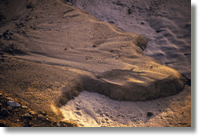 |
Miscellaneous
images from Korea: A stop sign in front of a
construction-site fence; some kids enjoying a hand-cranked Ferris wheel
at a street fair in Kimhae; the sun rising on a crushingly humid
morning in late summer. At left, this perfect alluvial fan caught
my eye one day after a monsoon-season rainstorm. The storm
brought a rush of sediment-carrying water spilling into an existing
muddy-bottomed puddle, where the sediment dropped as the water slowed
down. Eventually the puddle drained, leaving behind
this miniature geologic masterpiece. |
|
| F-4s
often held my attention in those days. Big, loud, smoky,
powerful, they were what fighters were supposed to look like.
Watching them light the afterburners for takeoff was always fun,
on a clear summer evening or on a rainy fall night, as in
the wobbly time-exposure in the center, below. In another
time exposure, at
right, F-4s in the landing pattern approached the airfield as I watched
from the roof of my dorm. The Phantom's engines had a distinctive
sound while
the planes circled overhead to land--kind of a ring almost, a hollow
moaning kind of sound, very different from that of other jets'
engines. |
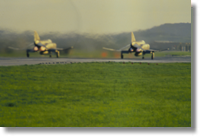 |
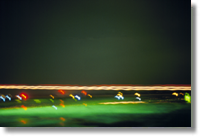 |
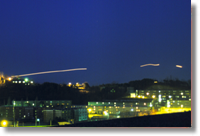 |
|
| At right, a C-5 crabs into the wind on short final approach to Osan Air Base in mid-1987. Not overly well known
for
their reliability, C-5s nonetheless impress the living daylights out of
me...they're just so big.
Taking the sequence of photos below was a fairly memorable
experience, as I'd decided my vantage point on the perimeter road
wasn't quite close enough and snuck onto the airfield, just short of
the runway overrun. It seemed like a good idea until the airplane
began to get really big in the viewfinder of my camera. After
snapping those last two pictures I hastily retreated, hoping the
Security Police weren't about to pick me up. They weren't, and it
remains a good memory, although I wouldn't try it again. |
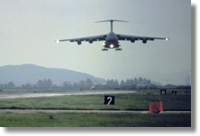 |
|
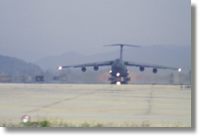 |
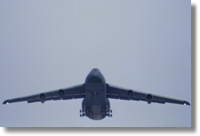 |
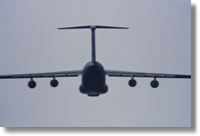 |
|
| Hahn
Air Base, West Germany, was in one of the world's most beautiful
spots--on top of the Hunsrueck above the Mosel River valley--although
you often couldn't see it through the fog. But the fog did clear on occasion. |
 |
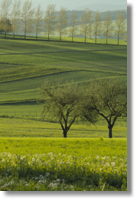 |
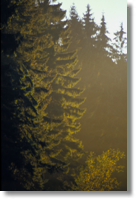 |
 |
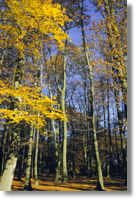 |
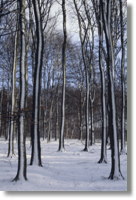 |
| Hahn was east of the Mosel, Bitburg and Spangdahlem Air Bases
to the
west. Spang is still there but the USAF left Bitburg and Hahn as the world situation changed. |
| The Mosel River winds among Riesling-covered hillsides and past medieval castle ruins, making its way northeast to join the Rhein at Koblenz. |
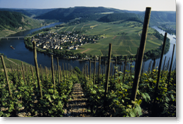 |
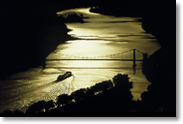 |
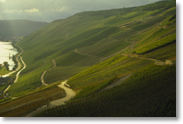 |
|
|
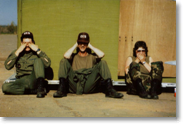 |
Deployments
for civil engineering
troops usually mean long days, spartan conditions, and inevitably some
hours sitting on a parking apron somewhere, leaning against a cargo
pallet,
waiting for an airplane. I've had the good fortune to
experience
those days in the company of hardworking, honest, friendly people, who
pulled together and carried their loads with dignity and good humor.
These photos are from Sidi Slimane Air Base, Morocco, in November
1987. |
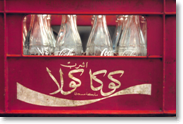 |
|
|
Sidi Slimane had been a USAF base in the 50s or 60s, and many of the old
facilities
were still intact, if run down, in the late 80s. The old theater building reminded
me of Jimmy Stewart and Strategic Air Command, saving the world in the
movies I watched as a kid. Being there, helping jets fly
from
that runway again, gave me a real sense of history, of having a small
role
in a long and proud tradition. |
|
|
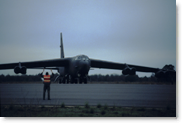 |
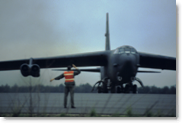 |
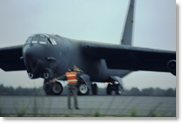 |
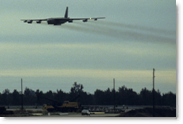
|
|
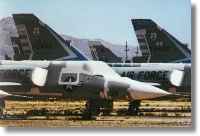 |
|
Space
Shuttle
Columbia, being ferried by a 747 back from its Edwards AFB landing site
to the launch facility at Cape Canaveral. The 747 had stopped
at
Davis-Monthan AFB to refuel.
|
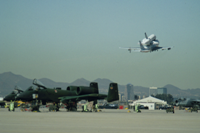 |
| Some
of the last F-106s, in the "boneyard" at Davis-Monthan
Air Force Base in Tucson, Arizona. These jets were
eventually
converted to remote-controlled drones, to give fighter pilots some very
rare opportunities for live-fire target practice. |
The view
from
the boom operator's window in a KC-135 refueling tanker as a B-52
approaches
for a fill-up, somewhere over the central United States.
|
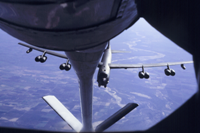 |
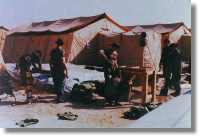
|
Filling
sandbags at King Khalid
Military City, Saudi Arabia, in December 1990. As a young
captain,
I took about 70 other civil engineering troops from Davis-Monthan and
went
to the desert to build and maintain this base. We all hated
it at
times, but it was one of the defining events in my life--along with
growing
up on the farm and becoming a father, it makes me who I am today. |
|
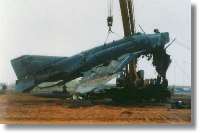
|
Hoisting
a wrecked F-4 onto a trailer,
after it crashed a few hours before dawn on about the third day of the
war. Unable to land in dense fog at an airfield with no
approach
lights, and with no fuel to fly somewhere else, the crew ejected
safely.
The airplane settled down in the sand and came to rest, amazingly
intact. |
| |
Inside a "hardened" aircraft
shelter at a base in Kuwait, after it had been occupied by Iraq and
attacked
by coalition forces during the war. The structure consisted
of an
inner reinforced concrete arch a couple of feet thick, covered by
several
feet of earth and finally about three feet of unreinforced
concrete.
Wasn't enough.
|
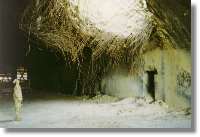
|
|
The team of firefighters
that worked for me at Al Kharj Air Base, Saudi Arabia, giving me a
proper
sendoff just before I was reassigned to a base in Riyadh.
Gentlemen
that they were, they let me take off my watch and boots before they
dragged
me over to this firefighting water storage tank and tossed me
in.
Thanks, guys--I'll always remember you.
|
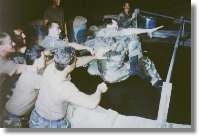
|
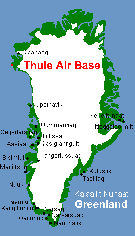
|
My most unexpectedly-enjoyable assignment:
Thule
("Too'-lee") Air Base, Greenland.
Great people, exciting weather, amazing scenery. In the
summer of 1999, a couple of coworkers and I ran the 12 miles down from
the radar site to the main base. Temperatures in the low 50s,
bright sun, meltwater streams rushing past the road, permanent icecap
just a few miles off in the distance, icebergs calving off the glaciers
into the fjord, big white arctic hares bounding along... that day was a
special gift.
|
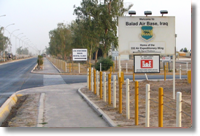 |
In
Iraq in 2005, I didn't experience any of the big Cecil B. DeMille type
sandstorms that other parts of Iraq sometimes see, with the towering
fast-moving clouds of blowing sand, but we did have dust storms during
the shamal, a hot summer wind from the northwest. The mornings were
usually clear, but by afternoon the air was often thick with a fine
brown dust. |
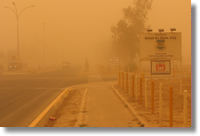 |
Driving through little villages on the way to project sites, I always
saw people everywhere. Walking, driving, riding bikes, pushing
carts, unloading trucks, coming into town on a tractor or a donkey,
selling stuff by the side of the road. I don't have much happy to
say about Iraq, but I couldn't help but be impressed with the
resilience of people who go on about their business despite the
uncertain and often dangerous environment.
I felt good about serving a tour in Iraq because if I hadn't gone
someone else would have had to go in my place. But I'm sorry that
any of us had to go. See my
WishingForHeroes site for some political reflections. |
|